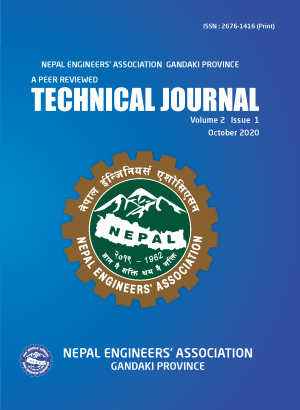Effect of Linear Soil Condition on Seismic Inputs
DOI:
https://doi.org/10.3126/tj.v2i1.32829Keywords:
Hazard curve, Monte Carlo Technique, Power spectral density function, Risk consistent response spectrumAbstract
Seismic inputs to structures in terms of risk consistent response spectrum and seismic hazard curves are developed at bedrock level considering ten independent seismic source zone in the vicinity of the Kathmandu valley. The seismic hazard curve is derived by assuming temporal occurrence of earthquakes to follow Poisson model. Response spectrum is developed using an empirical relationship of spectral ordinates with magnitude of earthquakes and epicentral distance. The seismic risk factor is introduced in response spectrum using conditional probabilities. Power spectral density function consistent with response spectrum is derived and ground acceleration time histories are derived from power spectral density function using Monte Carlo technique. To obtain free field hazard curves and ground motion parameters, one dimensional wave propagation analysis is used for two different underlying soil conditions.
Downloads
Downloads
Published
How to Cite
Issue
Section
License
© Technical Journal
Authors are required to transfer their copyright to the journal.




